
Citation: Selvaraj KSV. India’s First Tall × Tall Coconut Hybrid Development. J Agri Res 2016, 1(1): 000106.
*Corresponding author: KS Vijay Selvaraj, Coconut Research Station, India, E-mail: ksvijayselvaraj@gmail.com
An evaluation trial conducted over 30 years on coconut hybrid combinations has resulted in identification of a superior, high yielding Tall x Tall hybrid, released as VPM 5 involving Laccadive Ordinary Tall as female parent and Cochin China as male parent. This hybrid is better performing over other hybrids and local check with higher nut yield (161 nuts palm-1year-1), higher copra out turn of 24.1 kg palm-1 year-1 and 4.2 t ha-1 year-1 with an estimated oil recovery of 2.90 t ha-1 under irrigated conditions of Tamil Nadu. The hybrid took on an average of 45 months for initiation of first flowering, possess good tender nut water quality (TSS 5.5° Brix) and with 300 ml of tender nut water. The hybrid recorded 44 percent more nut yield, 48 percent more copra yield and 48.2 percent more oil yield over the released Tall x Dwarf hybrid ‘VHC 1’. The seedlings of the hybrid are more vigorous, producing higher number of leaves within 12 months, having higher leaf area and dry weight indicating precocity in growth and development. The flowering, morphological and fruit component traits of the hybrid were compared with parental palms are found superior. The characteristics of this hybrid and its performance indicated the potential to increase the productivity and over all coconut production. Molecular finger printing studies showed their parental confirmation.
Keywords: Coconut breeding; Hybrid evaluation; Nut yield; Copra; DNA finger printing
In coconut (Cocos nucifera L.) perennial nature of palms, higher level of heterozygosity, long juvenile phase, need for larger area and longer period for experimentation and lack of technologies for mass propagation of palms with targeted traits are the impeding factors in successful breeding efforts. A lot of research effort has gone into the improvement of coconut cultivations in many of the countries. The breeding efforts are mostly confined with conventional approaches such as mass selection and hybridization besides attempts to use individual palm selection for novel traits.
The discovery of hybrid vigour in coconut by Patel [1] in a cross between West Coast Tall and Chowghat Green Dwarf made in 1932 at Coconut Research Station, Nileshwar was a significant landmark in the history of crop improvement in coconut. This important finding paved way for the successful breeding programmes in coconut not only in India but also in other countries like Philippines, Indonesia, Sri Lanka, Cote d’Ivoire and Jamaica. Superior varieties selected after evaluation of germplasm have been utilized in crosses to develop high yielding hybrids. The inter - varietal hybridization in coconut breeding, demonstrated the usefulness of heterosis in coconut. Most of the hybrid tests that were conducted involved inter - varietal crosses of Dwarf x Tall and Tall x Dwarf types and the superiority of hybrids over local tall cultivars were established.
Similarly, Tall x Tall hybrids also exhibited heterozygotic vigour for nut yield and copra yield as that of Tall x Dwarf and Dwarf x Tall hybrids. Maliwan Pattanapruk et al., [2] and Natarajan et al., [3] reported better formance of Tall x Tall hybrids.
Hence, the present investigation was focused mainly on the cross between two better performing Tall types and to select the best performing hybrid from the crosses that were planted at Coconut Research Station, Veppankulam, Tamil Nadu during 1984 and evaluated for yield and other quality attributes.
Materials and MethodsThe experiment was conducted at Tamil Nadu Agricultural University – Coconut Research Station, Veppankulam (TNAU), Tamil Nadu situated at latitude of 10° 29'N and longitude 79° 23'E at an altitude of 20 m from the mean sea level. The average maximum temperature is 40°C in summer and 33°C in winter while the average minimum temperature is 28°C in summer and 23°C in winter. The annual rainfall varied between 800 to 1200 mm. The experimental material consisted of fourteen cross combinations including released hybrids mentioned below and VHC 1 (ECT x CGD) and ECT as checks/control.
Chandra Sankara (COD x WCT) developed by Central Plantation Crop Research Institute (CPCRI), Kasaragod, Kerala, India.
Kera Sankara (WCT x COD), Kera Ganga (WCT x GBGD) developed by Kerala Agricultural University, Pilicode, Kerala, India.
GBGD x LCT, GBGD x PHOT, GBGD x Fiji and Konkan Bhatye Co coconut Hybrid 1 (GBGD x ECT) developed at Horticultural Research Station, Ambajipeta, Andhra Pradesh, India.
LCT x CCNT, CCNT x LCT, LCT x PHOT, CCNT x PHOT and ECT x COD developed at Coconut Research Station, TNAU, Veppankulam, Tamil Nadu, India.
The details of the hybrids and parents are presented in (Table 1).
Hybrid seed nuts were produced through emasculation and pollination method. The hybrid seedlings were selected and planted at Coconut Research Station, TNAU, Veppankulam, Tamil Nadu during 1984 and evaluated for yield performance. The hybrids along with checks/control were planted in a replicated trial in randomized block design with five replications having six palms each. Spacing adopted was 7.5 x 7.5 m and the trail was conducted under irrigated condition. The yield data in terms of nut production, copra out turn, tender nut traits recorded from 2000 to 2014 (Fourteen years) was used for assessing the performance of hybrids. The high yielding best hybrid in the trial was selected and the observations on morphological , tender nut traits viz., tender nut fruit weight (g), volume of water (ml), total soluble solids (0 Brix), total sugars (g 100 mL-1), amino acids (mg 100 mL), sodium (ppm) and potassium (ppm) content were recorded. The morphological traits of the palms of selected hybrid LCT x CCNT (VPM 5) were recorded through standard procedures [4] and DUS traits were recorded as per the guidelines notified by PPV and FR Authority [5]. The nut yield, copra content and copra yield were estimated and the description of the hybrid VPM 5 was recorded. The information generated from earlier studies the fatty acid profile, reaction to environmental stresses, biochemical constituents of seedlings of hybrid combination [6-11] were collected and used. The seedling parameters such as height, girth, number of leaves and split leaves were assessed by producing hybrid seedling s using the selected parental palms during 2013 and 2014. The data on the morphological and fruit component traits of parental palms were also recorded and presented as supplemental data. The nut yield data of the hybrid VHC 2 (released by Coconut Research Station, Veppankulam) in the same age group was also used for comparison (Table 2).
SSR Analysis Leaf samplesLeaf samples of hybrid and parents were collected from VPM 5 (LCT x CCNT) from Coconut Research Station, Veppankulam, Tamil Nadu. 2 g of fresh material from each sample was utilized.
DNA isolation and poolingHigh quality DNA was isolated from spindle leaves of coconut accessions using a rapid method [12]. The isolated DNA was air-dried and dissolved in 0.75 ml TE buffer (10 mM Tris-HCl, pH 8.0 and 1 mM EDTA).
SSR AnalysisA set of five hyper polymorphic coconut SSR markers viz., Cn Cir B6, CAC10, CN1H2, CnCir87 and CnCirE10 distributed in different coconut chromosomes were used for distinguishing between LCT and CCNT parental lines used for hybrid coconut seedling production. Microsatellite analysis was carried out as described by Rajesh et al., [13].
ResultsThe cumulative mean nut yield of the hybrid is 161 nuts/palm-1 year-1 as compared with the hybrid check VHC 1(112 nuts palm-1 year-1) and tall check ECT (99 nuts palm-1 year-1) for a period of thirteen years since 2001 to 2014 (Table 2). The copra out turn of the hybrid VPM 5 was 24.12 kg palm-1 year-1 when compared with hybrid check VHC 1(16.33 kg palm-1 year-1) and tall check ECT (13.2 kg palm-1 year -1). The tender nut quantity of hybrid VPM 5 is 300.5 ml ± 25.5 whereas the hybrid check VHC 1 recorded 220.7 ml ± 30.1 and tall check ECT as 205.5 ml± 34.3.
Discussion Time to flowering and nut featuresThe hybrid VPM 5 flowered in four years and became harvestable two years earlier than the tall varieties (ECT). Early inflorescence emergence and fruit bearing are characteristics features of dwarf coconut types [4]. But this hybrid showed earliness in inflorescence emergence and fruit bearing as like as the Tall x Dwarf hybrids, which is the most distinct character of hybrids when compared with Tall which take 5 years for first flowering. The variable nut colour and size in the tall and hybrid coconut varieties did not only suggest dominance of the tall varieties for nut colour and size but also pointed to the existence of sub-populations within the tall and hybrid coconut. Breeding and molecular biology techniques could be used to identify the various sub-populations within the tall and hybrid varieties [14]. The uniform nut colour and size in the dwarf was largely due to self pollination in the variety. Time taken for flowering of 50 percent of the palms in the hybrid population was 60 months [8].
Nut and copra yieldIn the present investigation, the average nut yield recorded over twelve years from 2001 to 2014 of hybrids and ECT, VHC1, VHC 2 are given in Table 2. The average nut yield among the hybrids and ECT ranged from 83.8 nuts per palm per year (VHC 2) to 198 nuts per palm per year (VPM 5). The hybrid VPM 5 performed significantly better than other hybrids and ECT for nut yield with an increased nut yield of 43.8 %, 11 % and 62.6 % over the hybrid VHC 1, VHC 2 and ECT respectively Table 2. The copra content of the hybrid VPM 5 is 149.5 g which reflect on high copra yield of 24.12 kg palm-1 year-1 with an increase of 47.7 % and 83 % over VHC 1 and ECT respectively (Table 3).
The high yield potential of the hybrids relative to the tall coconut types could be attributed to precocity conferred on the hybrids by their dwarf parents [14]. The potential yield was estimated based on the average yield of the top 50 percent selected high yielding palms in each hybrid and control and the potential for copra out turn and oil yield was estimated.
The oil extracted from the copra of this hybrid was reported to have 45.4% lauric acid [15]. Based on the average and potential fruit yield, copra content, copra out turn and oil yield, the hybrid VPM 5 was selected for further study, and the palms, and the palms of this hybrid and the parental accessions of this hybrid were subjected to further observations. The hybrid VPM 5 also recorded high oil yield of 2.95 t ha-1 year-1 with an oil content of 70%. The morphological traits of the parental and hybrid palms are shown in Table 4.
The palms of VPM 5 attain an average height of 1340 cm in 28 years after planting. The colour of the petiole is reddish yellow and bearers bronze coloured, oval fruits and the husked fruits are oblong in shape. The selected, typical, seedlings of the hybrid are vigorous, producing more number of leaves, higher collar girth within 12 months and have more leaf area and shoot dry weight when compared to the selected seedlings of released hybrid VHC 1 and ECT. The palms of the female parent are tall, take average of 65 months for flowering, bear green fruits and have green petiole colour. The palms of male parent are tall, bear greenish yellow coloured fruits and take about 70 months for flowering. The hybrid palms exhibited desirable values for weight of fruits, fruit yield, weight of kernel and copra content beside many reproductive traits such as earliness for flowering and higher number of female flowers. The tender nut traits of the hybrid VPM 5 (Table 5).
Showed the suitability of the hybrid for tendernut purpose. The average quantity of tender nut water was 300 ml. Based on the organoleptic test: the tender nut water is classified as “good” in taste with TSS of 5.50 Brix.
Molecular finger printingThe polymorphic primers distinguishing the parental lines were then selected and utilized to survey their F1 hybrids for parentage confirmation. Out of five markers tested, CnCirE10 could unambiguously differentiate the parents and hybrids (Figure 1).
Microsatellites being co-dominant, a true type hybrid would possess the banding pattern of both the parents.
Based on the improved performance over the check variety VHC 1 and ECT versatile features of this coconut hybrid LCT x CCNT was released by Tamil Nadu Agricultural University as a new hybrid VPM 5 for general cultivation in Tamil Nadu during 2014.
The comparison using DUS traits of the hybrid VPM 5 with parents Laccadive Ordinary Tall (LCT) and Cochin China (CCNT) revealed that the hybrid VPM 5 has many distinguishable characters when compared to reference varieties VHC 1 and ECT (Supplemental data 1).
Owing to the superior performance of coconut hybrids, there is heavy demand for hybrid varieties which are early and heavy bearing. According to Bourdeix [14], before 1993, about 400 coconut hybrids were created around the world in national research programmes: however, less than ten of these coconut hybrids were tested internationally under various ecological conditions (figure 2).
There is potential for VPM 5, the promising Tall x Tall hybrid in South Asia to be evaluated under different coconut growing zones to upgrade it to an international variety for coconut communities in different coconut growing zones as it is evident that the realizable yield of coconut could be improved through cultivation of improved varieties. This hybrid is superior to the already released hybrids from Coconut research Station, TNAU, Veppankulam, Tamil Nadu in terms of yield and copra content and hence acceptable to the growers. It is a dual purpose variety, suitable for copra production and tender nuts. The palms are regular bearers and early flowering. The hybrid VPM 5 if cultivated in large scale, would help in enhancing the product diversification efforts considering its suitability for tender nut consumption, besides helping in sustaining the coconut production under irrigated conditions.
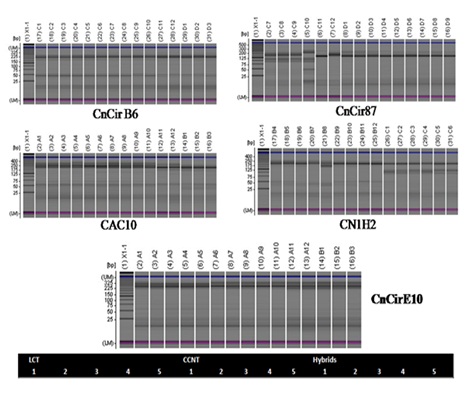
Figure 1: Molecular profiling of hybrid (VPM 5) and parents (Female (LCT), Male (CCNT) with SSR markers.
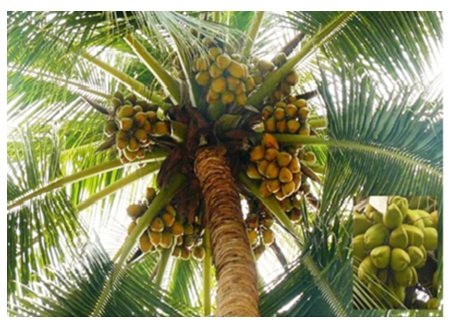
Figure 2: Crown and bunch view of VPM5 (Tall x Tall) hybrid.

Table 1: Details of parental palms used in the crossing.
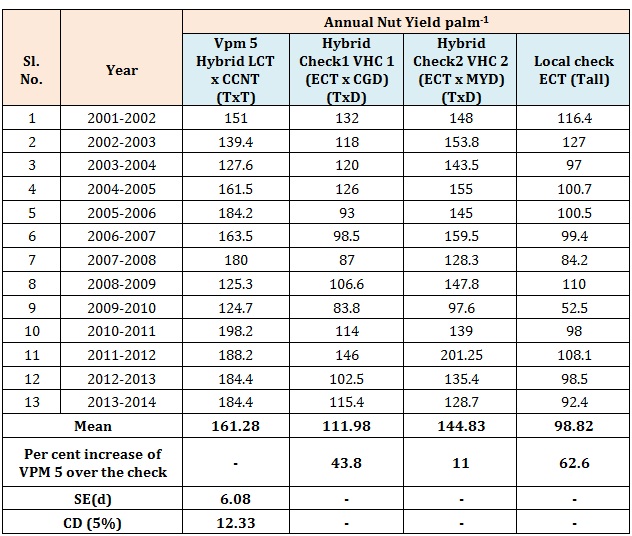
Table 2: Annual nut yield of the hybrid VPM 5 in comparison with hybrid checks and local check during the stabilized period of bearing (Planted during the year 1984).
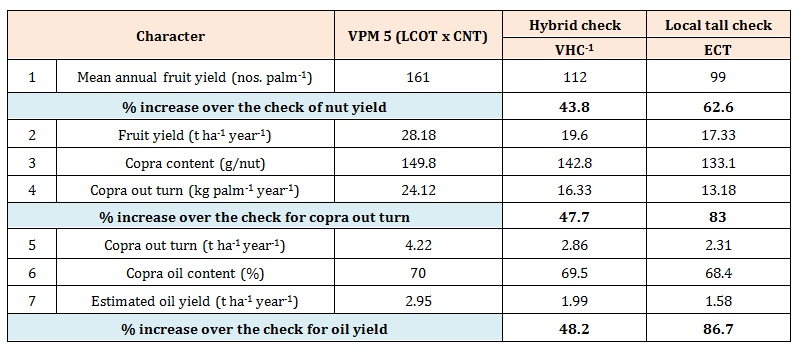
Table 3: Cumulative Mean Performance of VPM 5 (LCT x CCNT).
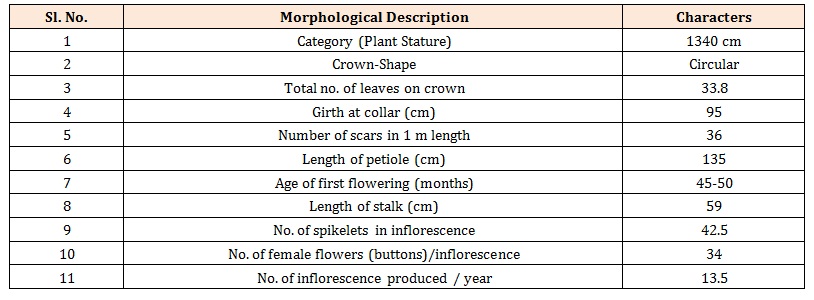
Table 4: Morphological features of VPM 5 (LCT x CCNT).

Table 5: Quality analysis of Tender nut characters of VPM 5.
* Standard protocols published by Biodiversity/CPCRI 1-Poor, 2- Average, 3- Good and 4- Very good
Chat with us on WhatsApp